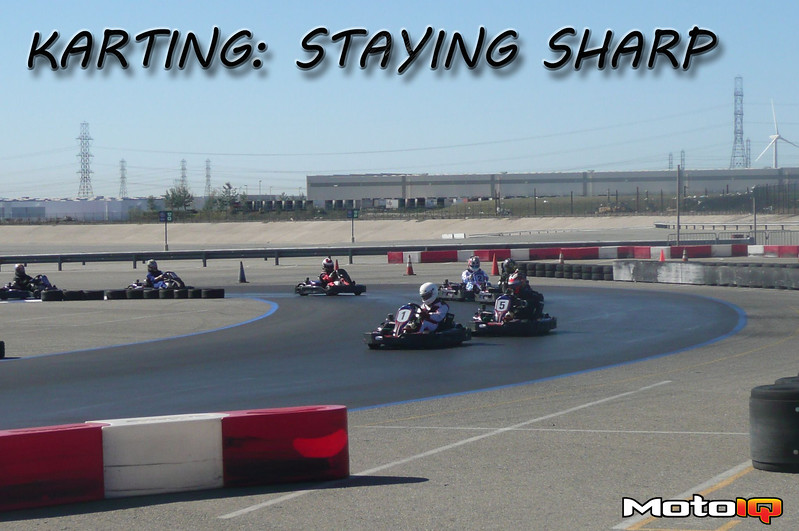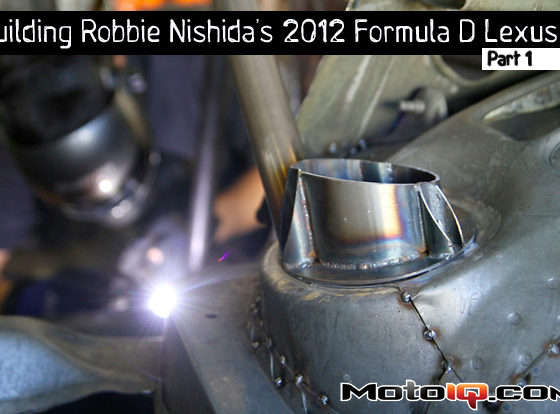 |
Karting: Staying Sharp
By Khiem Dinh
Photos Courtesy of Craig Stanton
Khiem Dinh is an engineer for Honeywell Turbo Technologies at the time of this writing. All statements and opinions expressed by Khiem Dinh are solely those of Khiem Dinh and not reflective of Honeywell Turbo Technologies.
I got a call from Dan Gardner of DG-Spec/Scion Racing to go karting. Gardner’s 25 Hours of Thunderhill teammate Craig Stanton had invited a number of people out to the kart track at Autoclub Speedway for a little bit of fun. Craig Stanton has raced everything from trucks in the Baja 1000 to a GT Porsche in The Grand-AM Rolex Sports Car Series. Most recently, Stanton has been named the lead driver and team development manager for MBBS Racing which will field an AMG Black Series in the2012 World Challenge GT Series. With a career spanning over two decades, I wasn’t going to miss this opportunity to gain some knowledge.
 |
| Craig has driven a lot of badass hardware including the Ferrari 599XX. Nothing quite like a car with 720hp and capable of a ‘Ring time of 6:58 to kick start your day. |
I don’t go karting often, and very rarely on a proper outdoor kart track designed for real racing karts. Karting is another discipline of motorsports requiring unique skills and driving style, but the fundamentals are applicable to any type of road racing making them an ideal learning ground. Many road racers and nearly every F1 driver started their racing careers in karts and often use karting in the off-season to keep their skills sharp. So off to the track we went.
The karts we used at Autoclub were from their arrive-and-drive program; Calspeed Karting hosts many kart races for all levels of karts and also hosts their own race series called Super Series. The Super Series race series uses the same karts we drove for the arrive-and-drive with the goal of everyone racing having equal performance karts; therefore, the fastest driver wins based on skill. All drivers are ballasted up to 190lbs; for those weighing more, well, time to go on a diet. The karts are all individually tested to be as equal as possible in lap times using a control driver with the variance between karts only being 0.2 seconds on a 66-68 second lap. That level of parity is amazing to me as I’ve gone karting at a to-be-unnamed location where there was a 1.0 second variance between karts (if not more) on a 27 second lap. Extrapolated out to 66 seconds, the variance would be about 2.5 seconds between karts. For the guys who are overweight, we determined in the course of our karting day that 10lbs was roughly 0.1 seconds a lap. The karts we used had the following specifications:
CalSpeed Sport Kart
Chassis: Sodi GT2 Proline
Engine: Honda GX270
Type: 270cc, 4-cycle, air-cooled, single cylinder engine
Max Output: 15hp@6500rpm
Transmission: single speed, centrifugal clutch
Features: 4-wheel protection, adjustable seat and pedals, on-board lap time display
 | ||
| This is the check-in room at the track. It has all the helmets, jackets/suits, neck braces and gloves that the drivers require. Just show up and race! |
 |
| The arrive-and-drive karts lined up and ready for racing. They all feature on-board lap timers which are a great source of data and instant feedback for trying out different lines and tracking improvements. |



